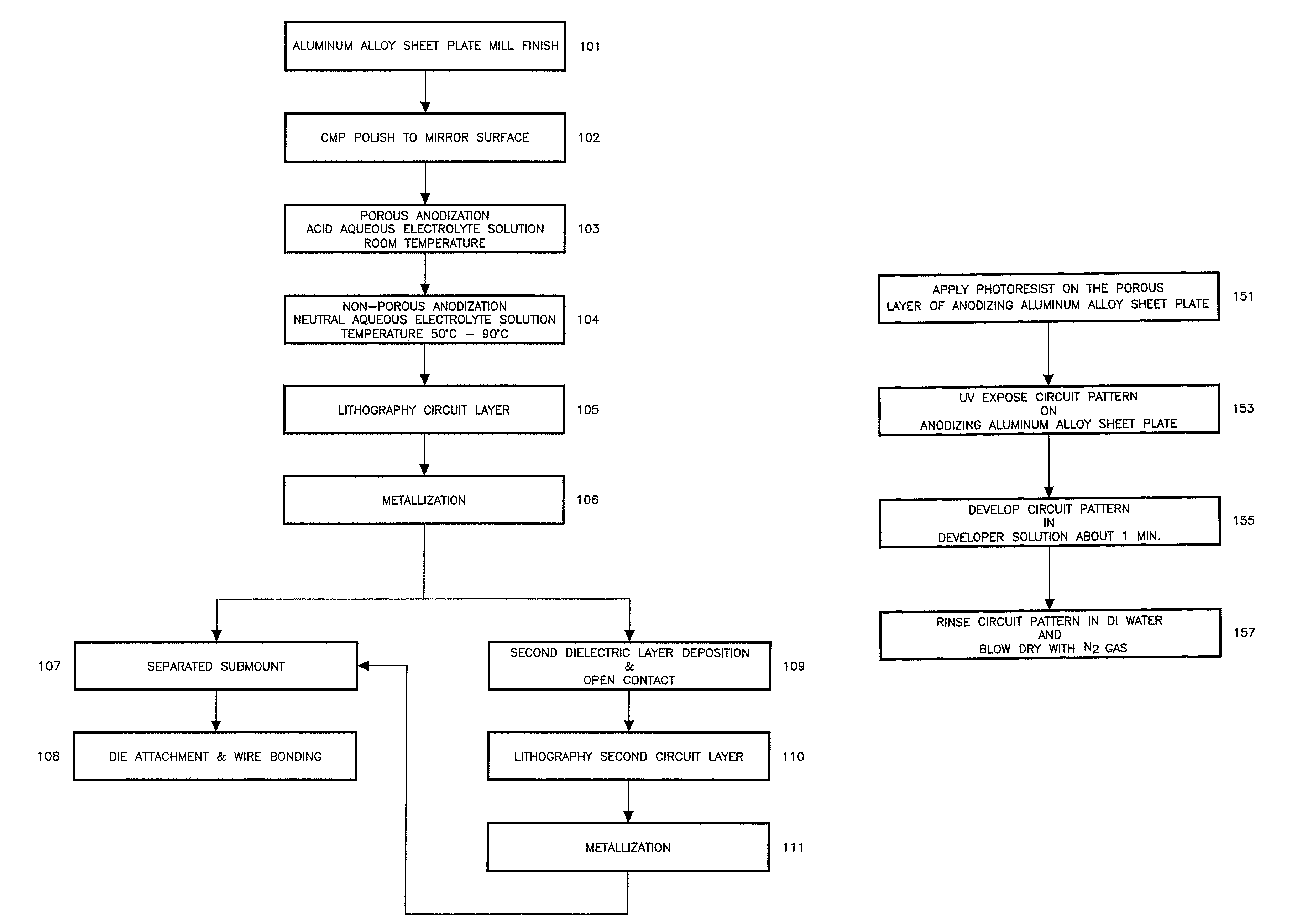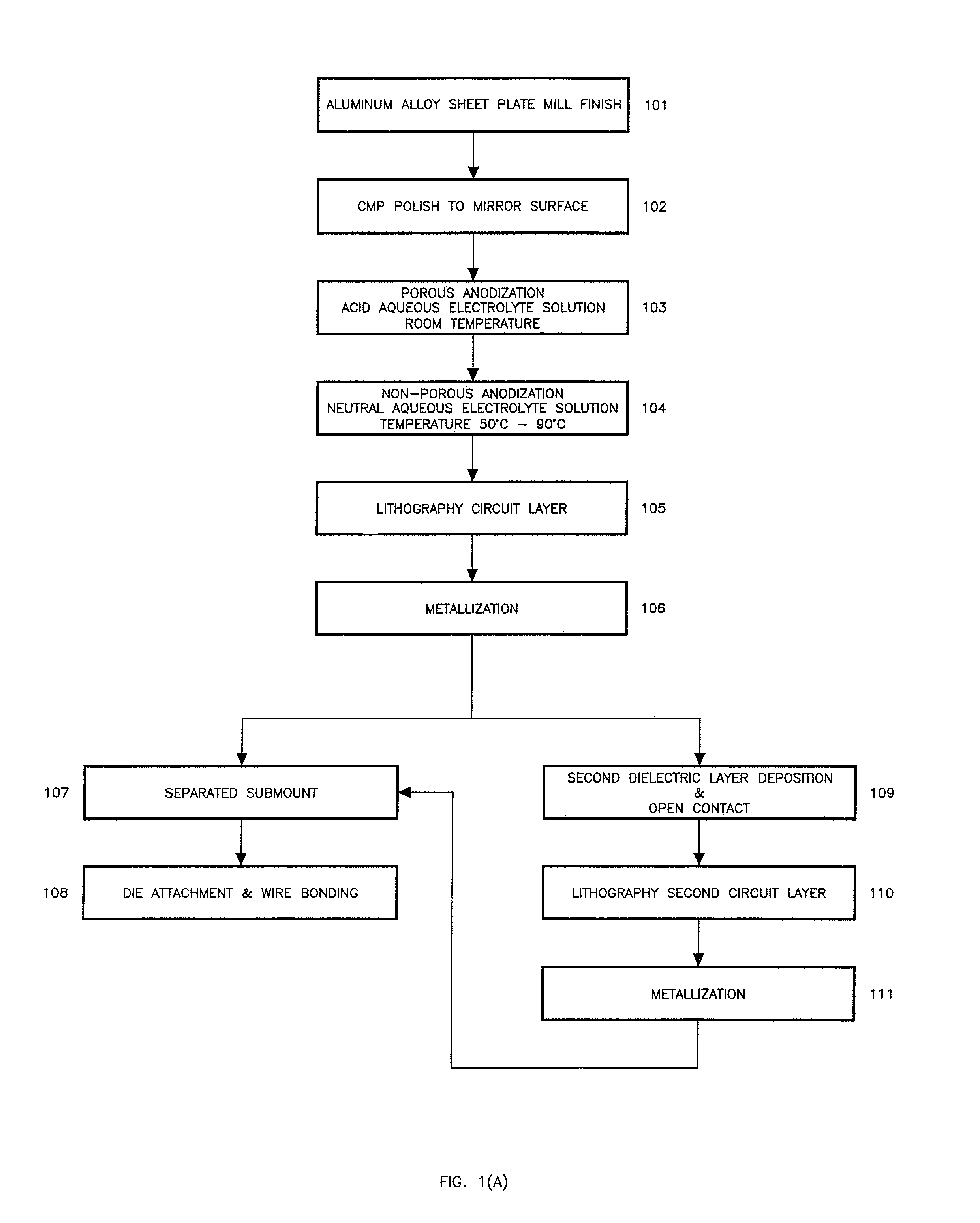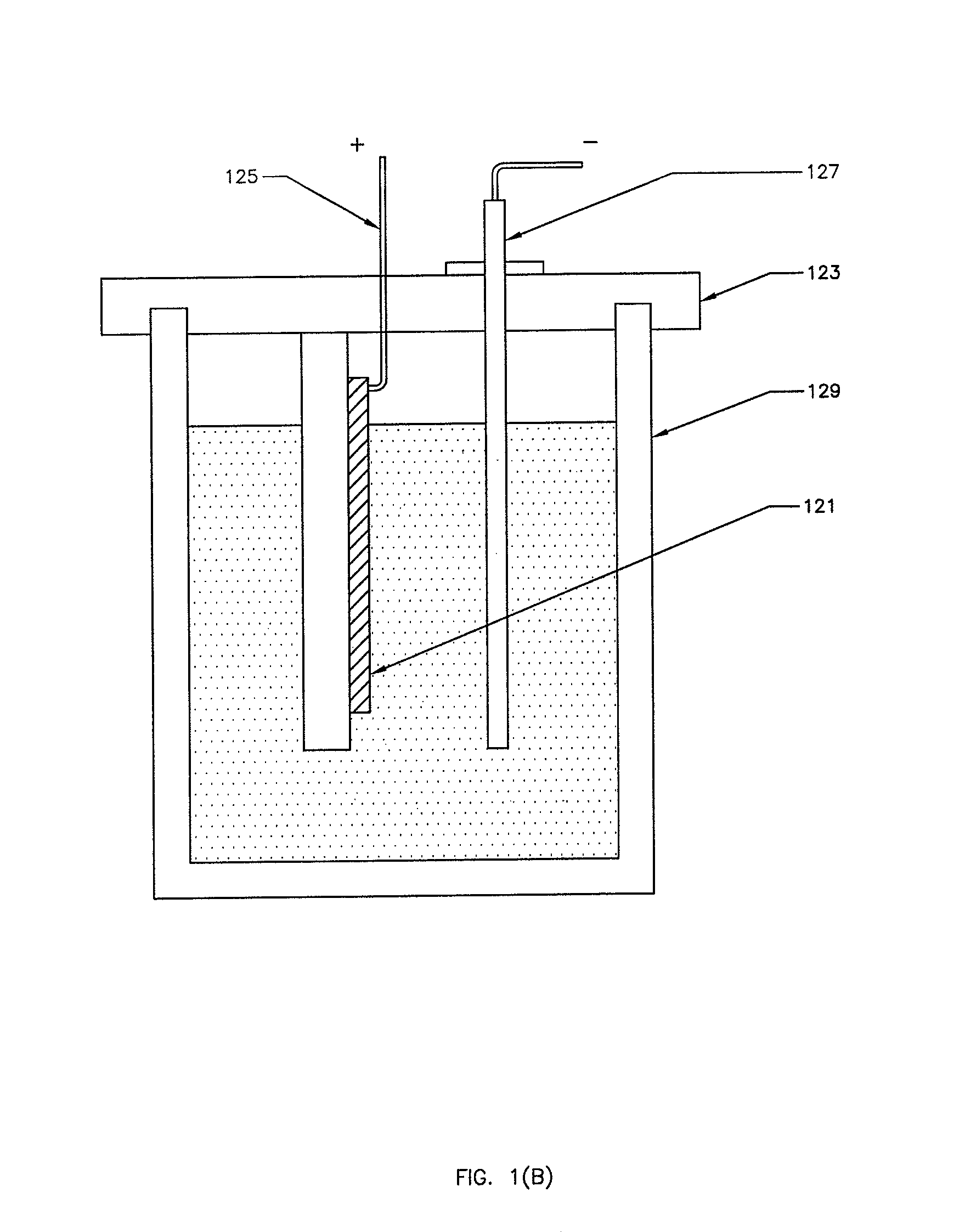Light emitting diode submount with high thermal conductivity for high power operation
a technology of high thermal conductivity and diodes, which is applied in the direction of conductive pattern formation, printed circuit assembling, point-like light sources, etc., can solve the problems of high heat generation, high production cost, and high electrical insulation requirements in many applications, and achieve good electrical insulation, high thermal conductivity, and good electrical insulation
- Summary
- Abstract
- Description
- Claims
- Application Information
AI Technical Summary
Benefits of technology
Problems solved by technology
Method used
Image
Examples
embodiment 1
[0033]Embodiment 1 of the present invention, is illustrated in FIG. 1(A) as a process flow chart for the anodizing of a commercial aluminum alloy sheet plate 1100 that contains a minimum of 99% aluminum of thermal conductivity 222 W / m°K, with mill finish 101. The aluminum alloy sheet plate is first degreased in boiling acetone and then rinsed in running de-ionized (DI) water (block 101). A mixed chemical solution from FUJIMI'S PLANERLITE 7000™ polishing slurry series is then used for CMP (chemical mechanical polishing) (block 102). The surface of the aluminum alloy sheet plate is polished until a mirror finish is achieved, and the RMS value of surface roughness is less than 10 nm, as verified by using a KLA-Tencor P-10 surface profile measurement for a length of 300 μm. The structure resulting from steps 101 to 108 will comprise the aluminum alloy sheet plate and the following layers in the order of increasing distance from the aluminum alloy sheet plate: a layer of non-porous alumi...
embodiment 2
[0043]In Embodiment 2 of the present invention, the aluminum alloy sheet plate 201 has been processed through the chemical mechanical polishing (CMP) step, and the RMS value of the surface roughness is less than 10 nm. The porous oxide layer 203 is grown under aqueous sulfuric acid of wt less than 10% and constant current density of 2.80 mA / cm2, at room temperature for 15 minutes. The non-porous oxide layer 202 is accomplished by use of a neutral aqueous ammonium pentaborate solution of wt 4-10%, at bath temperature less than 90° C. To avoid electrical discharge in the electrolyte solution, a constant voltage of 270 V is applied to the sample. At the beginning of this process the maximum current density is 2.34 mA / cm2, decreasing to 0.25 mA / cm2 by the end of the process. A transition layer 204, which has poorer electric insulator characteristics, is a mixed phase of porous and non-porous oxides. To avoid blocking the thermal path from the LED die, a thin dielectric layer 205, with t...
PUM
| Property | Measurement | Unit |
|---|---|---|
| temperature | aaaaa | aaaaa |
| total thickness | aaaaa | aaaaa |
| total thickness | aaaaa | aaaaa |
Abstract
Description
Claims
Application Information
 Login to View More
Login to View More - R&D
- Intellectual Property
- Life Sciences
- Materials
- Tech Scout
- Unparalleled Data Quality
- Higher Quality Content
- 60% Fewer Hallucinations
Browse by: Latest US Patents, China's latest patents, Technical Efficacy Thesaurus, Application Domain, Technology Topic, Popular Technical Reports.
© 2025 PatSnap. All rights reserved.Legal|Privacy policy|Modern Slavery Act Transparency Statement|Sitemap|About US| Contact US: help@patsnap.com



